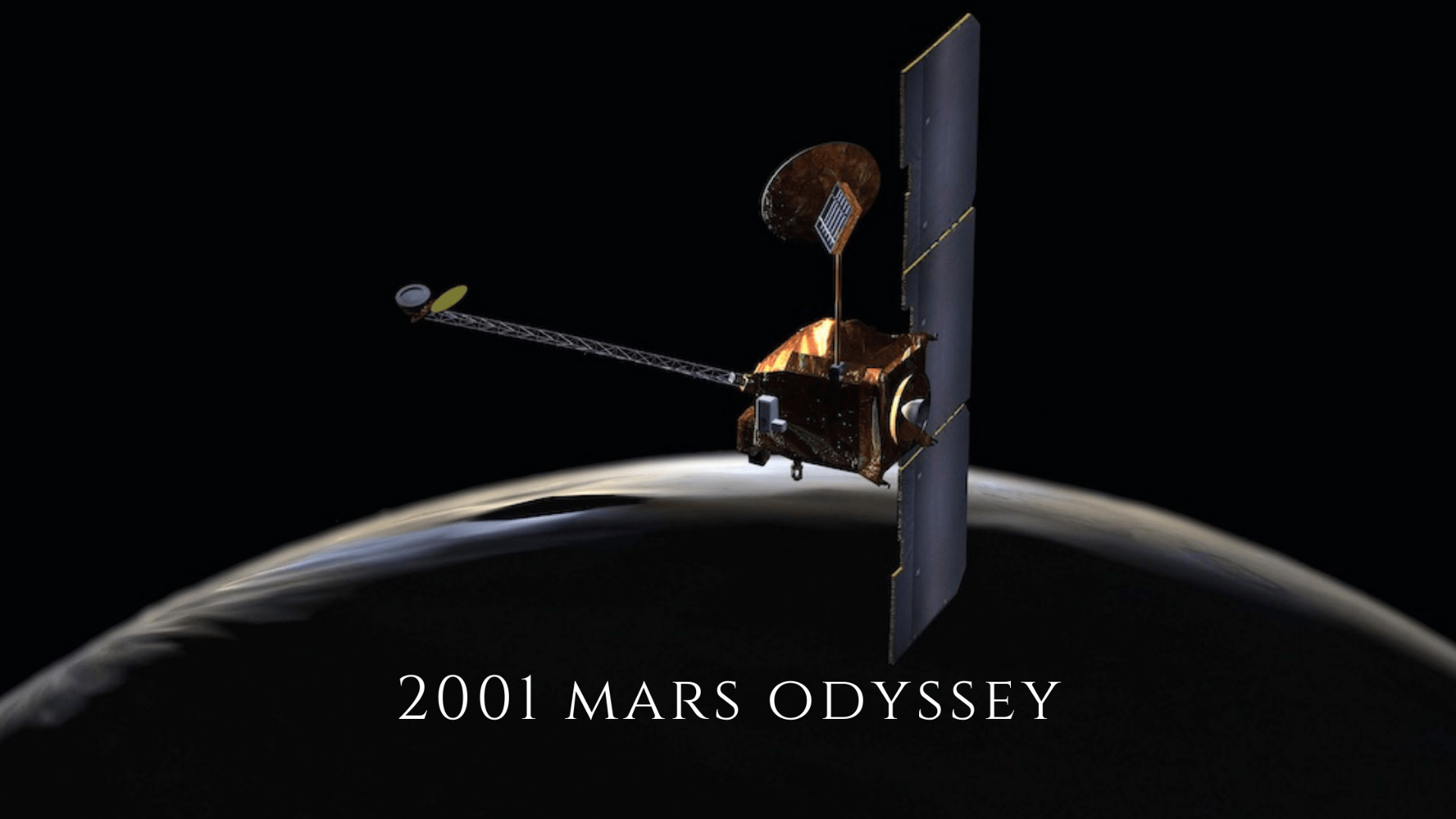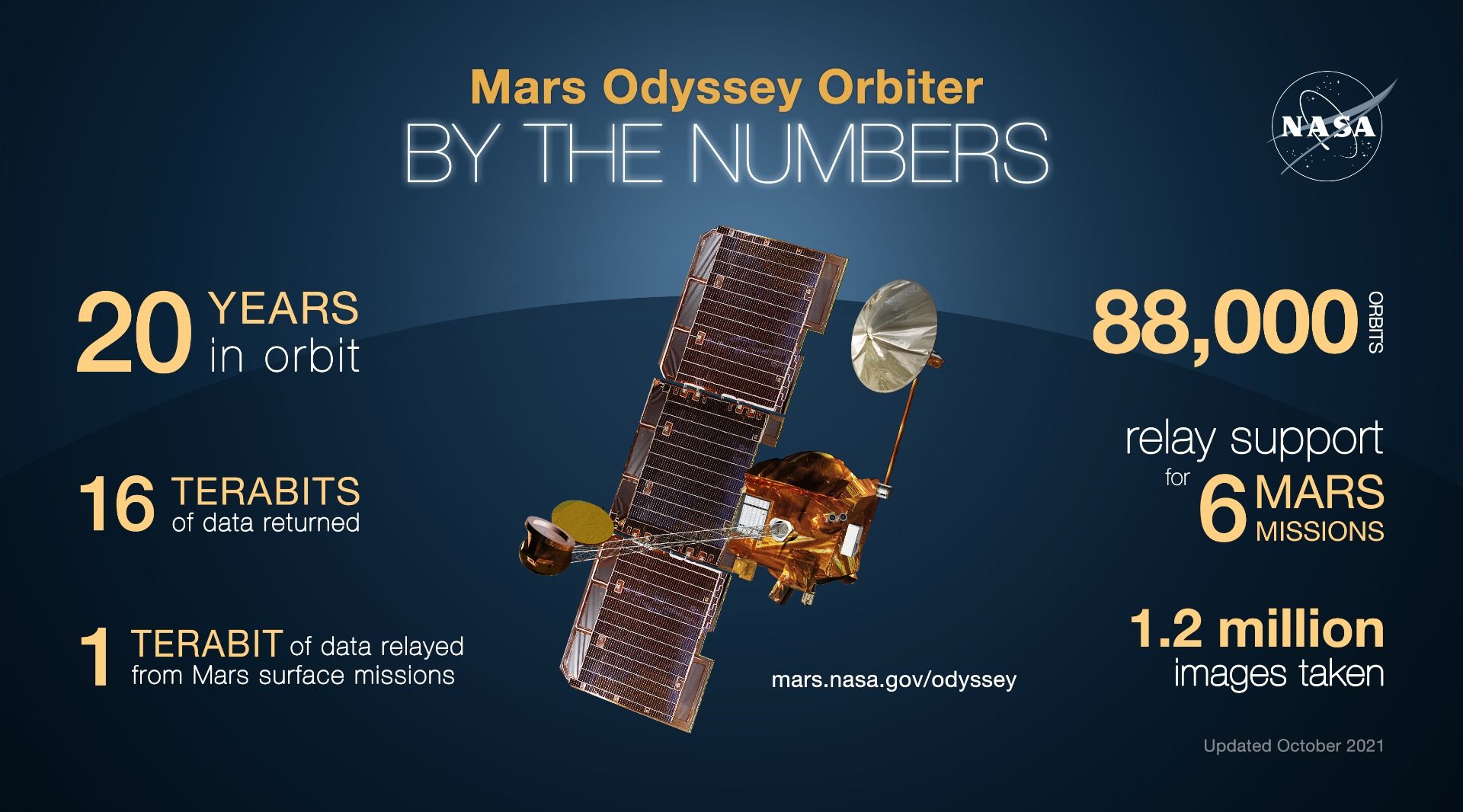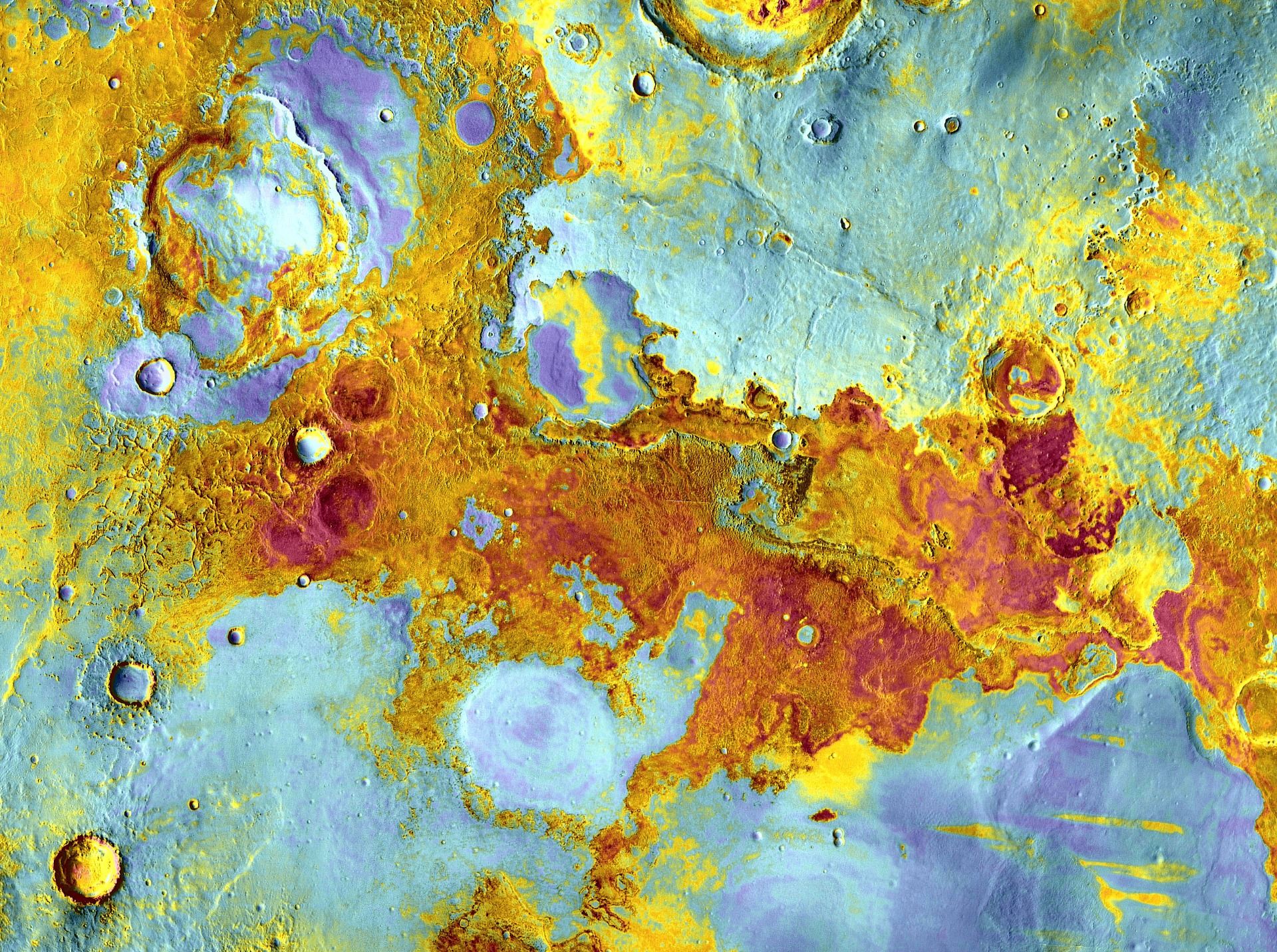
2001 Mars Odyssey

2001 Mars Odyssey is a robotic spacecraft project developed by NASA that was sent to orbit Mars. Its primary objectives are to detect evidence of past or present water and ice using spectrometers and to study Mars' radiation environment and geology. Odyssey also acts as a communication relay between the various rovers and landers on the Martian surface and Earth.
On April 7, 2001, Odyssey was launched and entered orbit around Mars on October 24, 2001. NASA reported in mid-2002 that Odyssey had detected large amounts of hydrogen, which is a sign that there might be ice close to the shallow surface of the planet, and proceeded to map the water distribution. Odyssey's original mission lasted until August 2004, but repeated mission extensions have kept Odyssey active. Approximately 85% of images and other data from the Mars Exploration Rovers, Spirit, and Opportunity, have passed through Odyssey as a relay point before reaching Earth. It has also helped analyze potential landing sites and aided the Mars Reconnaissance Orbiter by monitoring atmospheric conditions during its aerobraking period.

Odyssey's Thermal Emission Imaging System Instrument, THEMIS, was used to help select a landing site in 2012 for the Mars Science Laboratory. Several days before MSL's landing, Odyssey's orbit was altered to ensure that it could communicate with MSL during its first few minutes on the Martian surface. Because of Odyssey's Sun-synchronous orbit, it consistently passes over Curiosity's location two times a day, which allowed for consistently scheduled Earth contact.
In 2010, a spokesman for NASA stated that Odyssey could continue operating until 2016, and this estimate has since been extended until 2025. By December 15, 2010, Odyssey broke the record for longest-serving spacecraft at Mars. Odyssey currently holds the record for the longest-surviving continually active spacecraft in orbit around a planet other than Earth, ahead of the Pioneer Venus Orbiter (served 14 years) and the Mars Express (serving over 17 years), at 20 years.
